Years of service 1906–1921 Name Roman Ungern-Sternberg | Role Warlord | |
 | ||
Commands held Asiatic Cavalry Division Battles/wars World War IRussian Civil WarMongolian Revolution of 1921 Died September 15, 1921, Novosibirsk, Russia Similar People Pyotr Nikolayevich Wrangel, Mikhail Tukhachevsky, Joseph Stalin | ||
Roman von ungern sternberg the mad baron tooky history
Baron Roman Nicolaus Maximilian von Ungern-Sternberg (Russian: Барон Ро́берт-Ни́колай-Максими́лиан Рома́н Фёдорович фон У́нгерн-Ште́рнберг) (10 January 1886 NS – 15 September 1921) was an anti-Bolshevik lieutenant general in the Russian Civil War and then an independent warlord whose Asiatic Cavalry Division wrested control of Mongolia from the Republic of China in 1921 after its occupation. He was often referred to as Baron Ungern, or simply Ungern.
Contents
- Roman von ungern sternberg the mad baron tooky history
- Baron Roman Von Ungern Sternberg
- Childhood and youth
- First World War
- The Russian Civil War
- Restoring the independence of Outer Mongolia
- Mongolia and Ungern in February August 1921
- Defeat capture and execution 1921
- References
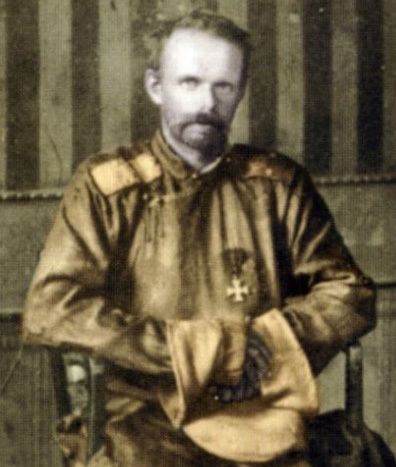
Ungern was an arch-conservative pan-monarchist who aspired to restore the Russian monarchy under Grand Duke Michael Alexandrovich of Russia and to revive the Mongol Empire under the rule of the Bogd Khan. In February 1921 he expelled Chinese troops from Mongolia and restored the monarchic power of the Bogd Khan.
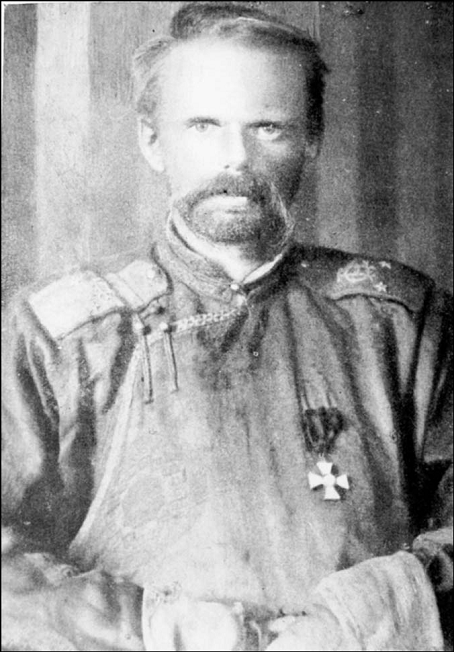
In June 1921 he went on to invade East Siberia in support of supposed anti-Bolshevik rebellions and to head off a Red Army-Mongolian partisan invasion; this action led to his defeat and capture two months later. He was taken prisoner by the Red Army and a month later put on trial for counterrevolution in Novonikolaevsk. After a six-hour show trial he was found guilty, and on 15 September 1921 he was executed.
Baron Roman Von Ungern Sternberg
Childhood and youth
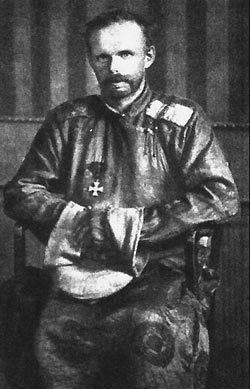
R.F. von Ungern-Sternberg was born in Graz, Austria, in 1886 to a noble Baltic-German family. The Ungern-Sternberg family settled in what is now Estonia during the Middle Ages. Ungern-Sternberg's first language was German, but he was also fluent in French, Russian, English and Estonian. His mother was a German noblewoman named Sophie Charlotte von Wimpffen, later Sophie Charlotte von Ungern-Sternberg, and his father was Baron Theodor Leonhard Rudolph von Ungern-Sternberg (1857–1918). He also had Hungarian roots, and claimed descent from Batu Khan, Genghis Khan's grandson, which played a role in his dream of reviving the Mongol Empire.
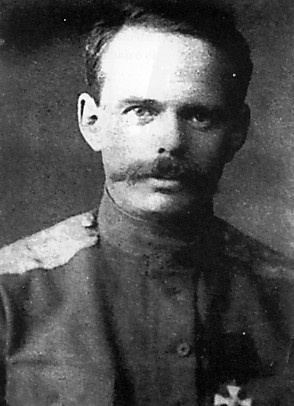
In 1888 his family moved to Reval (Tallinn), the capital of the Governorate of Estonia within the Russian Empire, where his parents divorced in 1891. In 1894 his mother married Baltic German nobleman Baron Oskar Anselm Herrmann von Hoyningen-Huene. Ungern-Sternberg grew up in the Russian province of Estland (modern Estonia), with his home being the Hoyningen-Huene estate at Jerwakant (modern Järvakandi, Estonia) that was set deep in the forests about 40 miles from Reval. In the summer Ungern-Sternberg lived on the island of Dago (modern Hiiumaa) in the Baltic, which he liked to boast had belonged to his family for over 200 years.
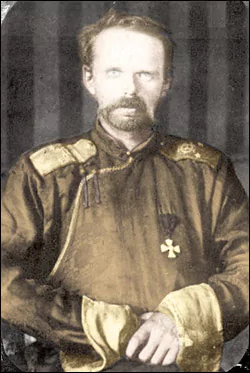
Ungern-Sternberg, despite his pride of German origin, identified himself very strongly with the Russian Empire. When asked if his "family had distinguished itself in Russian service", Ungern proudly answered: "Seventy-two killed in wartime!". Ungern-Sternberg believed that return to monarchies in Europe was possible with the aid of "cavalry people", meaning Russian Cossacks, Buryats, Tatars, Mongols, Kyryz, Kalmyks, etc.
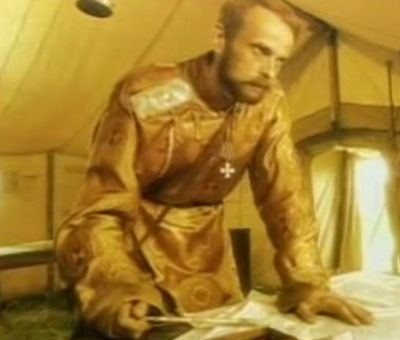
In 1898 his father was briefly imprisoned for fraud and in 1899 was committed to the local insane asylum. From 1900-02 Ungern attended the Nicholas I Gymnasium in Reval. His school records show that he was an unruly, bad-tempered young man who was constantly in trouble with his teachers owing to frequent fights with other cadets and breaking other school rules--smoking in bed, growing long hair, leaving without permission, etc.--which finally led to the schoolmaster writing a letter in February 1905 to his stepfather and mother, asking them to withdraw him from the school, otherwise he would be expelled. In 1905 he left the school to join the fighting in eastern Russia during the Russo-Japanese War, but it is unclear whether he participated in operations against the Japanese or if all military operations had ceased before his arrival in Manchuria, although he was awarded the Russo-Japanese War Medal in 1913.
In 1905 Russia exploded into revolution, and in the province of Estland Estonian peasants went on a bloody jacquerie against the Baltic-German nobility, which owned most of the land there, lynching aristocrats and burning down their estates. One of the estates burned down was the one at Jerwakant where Ungern-Sternberg had grown up. The revolution of 1905 and the destruction of the Jerwakant estate were huge traumas to Ungern-Sternberg, who saw the jacquerie as confirming his belief that the Estonian peasants who worked on his family's lands were all "rough, untutored, wild and constantly angry, hating everybody and everything without understanding why".
In 1906 Ungern was transferred to service in the Pavlovskoe Military School in St. Petersburg as a cadet of ordinary rank. As an army cadet he proved to be a better student than he ever was as a naval cadet, and he actually studied his course material, though in the words of Palmer Ungern was a "mediocre student" at best. During the same period Ungern-Sternberg had become obsessed with the occult and was especially interested in Buddhism. His cousin Count Hermann von Keyserling, who knew him well later, wrote that the baron was very curious from his teenage years onward with "Tibetan and Hindu philosophy" and often spoke of the mystical powers possessed by "geometrical symbols". Keyserling called Ungern-Sternberg "one of the most metaphysically and occultly gifted men I have ever met" and believed that the baron was a clairvoyant who could read the minds of the people around him. Later, in Mongolia, Ungern became a Buddhist but did not leave the Lutheran faith. There is a widespread view that he was viewed by Mongols as the incarnation of the "God of War" (the figure of Jamsaran in Tibetan and Mongol folklore). Although many Mongols may have believed him to be a deity, or at the very least an incarnation of Genghis Khan, Ungern was never officially proclaimed to be any of these incarnations.
After graduating he served as an officer in east Siberia in the 1st Argunsky and then in the 1st Amursky Cossack regiments, where he became enthralled with the lifestyle of nomadic peoples such as the Mongols and Buryats. Ungern had specifically asked that he be stationed with a Cossack regiment in Asia, as he wanted to learn more about Asian culture, a request that was granted During this period Ungern-Sternberg was notorious for his heavy drinking and exceptionally cantankerous moods. During one such brawl his face was scarred when the officer he was fighting with struck him with his sword, leaving him with a distinctive facial scar. It has been claimed that the sword blow that caused the scar also caused brain damage that was the root of Ungern's insanity. However, a special study revealed that Ungern-Sternberg was not mentally insane, although the wound affected his irritability. Those who knew him well described him as very drawn towards "Eastern culture", as he was fascinated by Asian cultures, especially that of the Mongols and the Buryats. At the same time Ungern was an excellent horseman who earned the respect of the Mongols and the Buryats due to his skill at riding and fighting from a horse, being equally adept at using both a gun and his sword. In 1913, at his request, he transferred to the reserves. Ungern moved to Outer Mongolia to assist Mongols in their struggle for independence from China, but Russian officials prevented him from fighting with Mongolian troops. He arrived in the town of Khovd in western Mongolia and served as out-of-staff officer in the Cossack guard detachment at the Russian consulate.
First World War
On July 19, 1914, Ungern joined front-line forces as part of the second-turn 34th Regiment of Cossack troops stationed on the Austrian frontier in Galicia. He took part in the Russian offensive in East Prussia and from 1915–16 also participated in rear-action raids on German troops by the L.N. Punin Cavalry Special Task Force. Ungern served in the Nerchinsky Regiment. Throughout the war on the Eastern Front he gained a reputation as an extremely brave--but somewhat reckless and mentally unstable--officer, a man with no fear of death who seemed most happy leading cavalry charges or being in the thick of combat. He was decorated with several military awards: orders of St. George of the 4th grade, St. Vladimir of the 4th grade, St. Anna of the 3rd and 4th grades, as well as St. Stanislas of the 3rd grade. Despite his many awards, he was eventually discharged from one of his command positions for attacking another officer and a hall porter during a drunken rage in October 1916, which led to his being court-martialed and sentenced to two months in prison (details see in). Gen. Wrangel mentions Ungern's determination in his memoirs.
After his release from prison in January 1917, Ungern was transferred to the Caucasian theatre of the conflict, where Russia was fighting against the Ottoman Empire. The February Revolution that ended the rule of the House of Romanov was an extremely bitter blow to the monarchist Ungern-Sternberg, who saw the revolution as the beginning of the end of Russia. In the Caucasus Ungern-Sternberg first met Cossack Capt. Grigory Semyonov, later one of most well-known Russian anti-communist warlords in Siberia. In April 1917 near Urmia, Iran, Ungern, together with Semyonov, started to organize a volunteer military unit composed of local Assyrian Christians. The Ottoman government had waged the Assyrian Genocide, attempting to exterminate the Assyrian minority, which led to thousands of Assyrians fleeing to the Russian lines. Ungern and Semyonov conceived of a scheme under which the two would organize and lead Assyrian troops to serve as an example for the Russian army, which was being demoralized by the revolutionary mood. Under Ungern's command his Assyrians went on to score some minor victories over the Turks, but their total contribution to Russia's war effort was limited. Afterwards, the Assyrian scheme led Semyonov to the idea of placing Buryat troops in Siberia. The Kerensky government gave its approval to Semyonov's plans, and Ungern-Sternberg soon headed east to join his friend in trying to raise a Buryat regiment.
The Russian Civil War
After the Bolshevik-led October Revolution of 1917, Semyonov and Ungern declared their allegiance to the Romanovs and vowed to fight the revolutionaries. In late 1917 Ungern, Semyonov and five Cossacks peacefully disarmed a group of about 1500 pro-Red combatants on a railway station in Manchuria on the China-Eastern Railway (FER) in China near the Russian border. For a time the station in Manchuria was a stronghold of Semyonov and Ungern in their preparations for war in Transbaikal. They started to enroll troops in a Special Manchurian Regiment, which became a nucleus for anti-communist forces led by Semyonov
After the White troops defeated the Reds on a section of the FER line in Russia, Semyonov appointed Ungern commandant of troops stationed in Dauria, a railway station in a strategic position east-southeast of Lake Baikal. Semyonov and Ungern, though fervently anti-Bolshevik, were not typical of the figures to be found in the leadership of the White movement, as their plans differed from those of the main White leaders. Semyonov refused to recognize the authority of Adm. Aleksandr Kolchak, the nominal leader of the Whites in Siberia. Instead, he acted independently, supported by the Japanese with arms and money. For White leaders like Kolchak and Denikin, who believed in a "Russia strong and indivisible", this represented high treason. Ungern was nominally subordinated to Semyonov but he, too, often acted independently. Adm. Kolchak was a conservative but not a monarchist, who promised that after the victory of the Whites he would reconvene the Constituent Assembly disbanded by the Bolsheviks in January 1918, which would then decide the future of Russia, including the question of whether or not to restore the monarchy. Ungern, to the contrary, believed that monarchs were accountable only to God, and the monarchy was the political system that God had chosen for Russia, so it was self-evident that it should be restored to the way it had existed before the October Manifesto of 1905. For Ungern, the opinions of the people of Russia were irrelevant, as monarchs were not accountable to the people.
Because of his successful military operations in Hailar and Dauria, Ungern received the rank of Major-General. Semyonov entrusted him with forming military units to battle Bolshevik forces. They enrolled Buryats and Mongols in their national military units. In Dauria, Ungern formed the volunteer Asiatic Cavalry Division (Russian: Азиатская конная дивизия), which included Russians, Buryats, Tatars, Bashkirs, Mongols from different tribes, Chinese, Manchu, Polish exiles and many others. Ungern reinforced his military station at Dauria, creating a kind of fortress from which his troops launched attacks on Red forces. Under his rule, Dauria became a well known "torture center" filled with the bones of dozens of Ungern's victims, people who were executed because of accusations of being Reds or thieves (details in ). Ungern's chief executioner had been a Col. Laurentz, but later, in Mongolia, Ungern had him executed because he lost Ungern's trust, although under unclear circumstances. Like many other White units, Ungern's troops employed "requisitions" as a source of their supply. They examined trains passing through Dauria to Manchuria. While these confiscations did not significantly diminish the supplies of Kolchak's forces, private Russian and Chinese merchants lost considerable property.
In 1919, taking advantage of the weakness of Russia's government caused by revolutions and civil war, the Chinese government, established by members of the Anhui military party, sent troops led by Gen. Sui Shuzheng to join Outer Mongolia to China and end its autonomy. This violated the terms of a tripartite Russian-Mongolian-Chinese agreement concluded in 1915, which secured the autonomy of Outer Mongolia and did not allow the presence of Chinese troops, except for small numbers of consular guards Although the Anhui party was supported by Japan, indications that Japan inspired Chinese occupation of Outer Mongolia have not yet been confirmed by documents. After the fall of Anhui party rule in China, Chinese soldiers in Mongolia found themselves effectively abandoned. They rebelled against their commanders and plundered and killed Mongols and foreigners. Some of the Chinese troops during the occupation were Tsahar (Chahar) Mongols from Inner Mongolia, who had been a major cause of animosity between Outer Mongols (Khalkhas) and Inner Mongols.
As part of his plans, Ungern traveled to Manchuria and China (February through September 1919). There he established contacts with monarchist circles and also made preparations for Semyonov to meet with Manchurian warlord Marshal Zhang Zuolin, the "Old Marshal". In July 1919 Ungern married Manchurian princess Ji in an Orthodox ceremony in Harbin. The princess was given the name Elena Pavlovna. She and Ungern communicated in English, their only common language. This marriage had a political aim, as Ji was a princess and a relative of Gen. Zhang Kuiwu, commander of Chinese troops at the western end of the Chinese-Manchurian Railway, and governor of Hailar.
Restoring the independence of Outer Mongolia
After Kolchak's defeat at the hands of the Red Army and the subsequent decision of Japan to withdraw its expeditionary troops from the Transbaikal, Semyonov, unable to withstand the pressure of Bolshevik forces, planned a retreat to Manchuria. Ungern, however, saw this as an opportunity to implement his monarchistic plan. On 7 August 1920 he broke his allegiance to Semyonov and transformed his Asiatic Cavalry Division into a guerrilla detachment. Ungern's troops started to move towards the border of Outer Mongolia. They crossed the northern border of Outer Mongolia on 1 October 1920 and moved southwest. Having crossed the Mongolian border, Ungern moved westwards to the Mongolian capital of Urga. He entered into negotiations with Chinese occupying forces. All of his demands, including disarmament of the Chinese troops, were rejected. On October 26–27 and again on November 2–4, 1920, Ungern's troops assaulted Outer Mongolia's capital, Urga (officially Niislel Khuree; now Ulaanbaatar) but suffered disastrous losses. After the defeat his forces retreated to the upper currents of the Kherlen River Setsen-Khan Aimag (district ruled by princes with the title Setsen Khan) in eastern Outer Mongolia. He was supported by Mongols who sought independence from Chinese occupation, especially the spiritual and secular leader of Mongols, the Bogd Khan, who secretly sent Ungern his blessing for expelling Chinese from Mongolia. The Chinese had tightened their control of Outer Mongolia by this time, strictly regulating Buddhist services in monasteries and imprisoning Russians and Mongols whom they considered "separatists". According to memoirs by M.G. Tornovsky, the Asiatic Division numbered 1,460 men, while the Chinese garrison was 7000 strong. The Chinese had the advantage in artillery and machine guns and had built a network of trenches in and around Urga. At his camp Ungern imposed ferocious discipline on his Russian soldiers to prevent desertion and demoralization.
Ungern's troops began moving from their camp to Urga on 31 January. On 2 February they battled for control of Chinese front lines and secured parts of Urga. His detachment, led by B.P. Rezukhin, captured Chinese front-line fortifications near Small Madachan and Big Madachan settlements in the southeastern vicinities of Urga. During the battle Ungern's special detachment of Tibetans, Mongols, Buryats and Russians rescued the Bogd Khan from house arrest and transported him through the Bogd Uul to Manjushri Monastery. At the same time another detachment moved to the mountains east of Urga. On 3 February he gave his soldiers a respite. Borrowing a tactic from Genghis Khan, he ordered his troops to light a large number of campfires in the hills surrounding Urga, using them as reference points for Rezukhin's detachment. This made the town appear to be surrounded by an overwhelming force. Early on 4 February Ungern launched an assault on the Chinese White barracks from the east and captured them. Then he divided his forces in two parts. The first launched a major assault on the remaining Chinese positions in the Chinese trade settlement (Chinese: 買賣城, Maimaicheng). The second moved westwards towards the part of Urga called Consular Settlement. Upon reaching the Maimaicheng, Ungern had his men smash their way in by blasting the gates with explosives and improvised battering rams. After breaking in, a general slaughter set in, as both sides fought with sabers. After the capture of Maimacheng, Ungern joined his troops attacking Chinese troops at the Consular Settlement. After a Chinese counterattack, Ungern's soldiers retreated a short distance northeast and then launched another attack with the support of another Cossack and Mongolian detachment, which began an attack from the northeast and northwest. Ungern's troops gradually moved westwards in Urga, pursuing retreating Chinese soldiers. The capital city was finally taken on the evening of 4 February. Chinese civilian administrators and military commanders abandoned their soldiers and fled northwards from Urga on 11 cars on the night of 3-4 February. Chinese troops fled northward on February 4 and 5. They massacred any Mongolian civilians they encountered along the road from Urga to the Russian border. Russian settlers who supported the Reds moved from Urga together with the fleeing Chinese troops. During the capture of Urga the Chinese lost about 1500 men, while Ungern's forces suffered about 60 casualties.
After the battle, Ungern's troops began plundering Chinese stores and killing Russian Jews who were living in Urga, as the Cossacks had also been set against the Jews. Ungern himself ordered the Jews to be killed, except for those who had notes from him sparing their lives. It has been estimated by surviving archival documents and memoirs that 43-50 Jews were killed during Ungern's stay in Mongolia, or about 5%–6% of all those executed under his orders. Several days later the looting by his troops was stopped by Ungern, but his secret-police bureau led by Col. Leonid Sipailo continued searching for "Reds". Between March 11-13 Ungern captured a fortified Chinese base at Choir between the mountains Otsol Uul and Choiryn Bogd Uul to the south of Urga. Ungern had 900 troops and the Chinese defenders about 1500. After capturing Choiryn Ungern himself returned to Urga. His detachments, consisting of Cossacks and Mongols, moved southward to Zamyn-Üüd, a frontier settlement and another Chinese base. The defending Chinese soldiers abandoned Zamyn-Üüd without a fight.
When the remaining Chinese troops, having retreated to northern Mongolia near Kyakhta, attempted to round Urga to the west in order to reach China, the Russians and Mongols feared they were attempting to re-capture Urga. Several hundred Cossack and Mongol troops were dispatched to stop the Chinese forces, which numbered several thousand, in the area of Talyn Ulaankhad Hill near the Urga–Uliastai road in central Mongolia. After a battle that raged from 30 March to 2 April, in which more than 1000 Chinese and approximately 100 Mongols, Russians and Buryats were killed, the Chinese were routed and chased to the southern border of the country. Thus Chinese forces left Outer Mongolia.
Mongolia and Ungern in February-August 1921
Ungern, Mongolian lamas and princes brought the Bogd Khan from Manjusri Monastery to Urga on February 21, 1921. On February 22 a solemn ceremony took place, restoring the Bogd Khan to the throne. As a reward for ousting the Chinese from Urga, the Bogd Khan granted Ungern the high hereditary title darkhan khoshoi chin wang in the degree of khan, and other privileges. Other officers, lamas and princes who had participated in these events also received high titles and awards. For seizing Urga, Ungern received from Semyonov the rank of Lieutenant-General. Mongolia was proclaimed an independent monarchy under the theocratic power of Bogd Khan, or the 8th Bogd Gegen Jebtsundamba Khutuktu.
On 22 February 1921 Mongolia was proclaimed an independent monarchy. Supreme power over Mongolia belonged to the Bogd Khan. According to some eyewitnesses (among them his engineer and officer Kamil Giżycki, and Polish adventurer and writer Ferdynand Antoni Ossendowski), Ungern was the first to institute order in Urga, imposing street cleaning and sanitation and promoting religious life and tolerance in the capital, and attempting to reform the economy. Ossendowkski, one of the most popular Polish writers in his lifetime (at the time of his death in 1945, his overseas sales were the second-highest of all the writers of Poland), had served as an official in Adm. Kolchak's government and after its collapse, fled to Mongolia. He became one of Ungern's very few friends and in 1922 published a best-selling book, Men, Beasts and Gods, in English about his adventures in Siberia and Mongolia, which remains the book by which the Ungern story is best known in the English-speaking world. Comparison of Ossendowski's diary with his book and with documents on Mongolia revealed that his reports on Mongolia at Ungern are largely true, except for a few stories; Ossendowski was the first to describe Ungern's views in terms of Theosophy, although Ungern himself has never been a Theosophist.
Ungern did not interfere in Mongolian affairs and only assisted Mongols with some issues according to orders of the Bogd Khan. Russian colonists, on the other hand, suffered cruelties from Ungern's secret-police bureau led by Leonid Sipailo. Many innocent people were tortured and killed by Sipailo and his subordinates. A list of people known to have been killed on Ungern's orders or by others on their pretext, both in Russia and Mongolia, confirms the deaths of 846 people, approximately 100-120 from Urga, which was about 3%–8% of the total foreign colony population (see for details).
Some eyewitnesses considered his Asiatic Cavalry Division as a base for a future Mongolian national army. This division consisted of national detachments, such as the Chinese regiment, Japanese unit, various Cossack regiments, Mongol, Buryat, Tatar and other peoples' units. Ungern said that 16 nationalities served in his division. Dozens of Tibetans also served as part of his troops. They might have been sent by 13th Dalai Lama, with whom Ungern communicated, or these Tibetans may have belonged to the Tibetan colony in Urga. The presence of the Japanese unit in the division is often explained as an evidence that Japan stood behind Ungern in his actions in Mongolia. Studies of interrogations of these people from Japanese archive revealed that they were mercenaries serving on their own, as other nationals in the division, and that Ungern was not managed by Japan
Defeat, capture and execution, 1921
The Bolsheviks started infiltrating Mongolia shortly after the October 1917 revolution, i.e., long before they took control of the Russian Transbaikal. In 1921 various Red Army units belonging to Soviet Russia and to the Far Eastern Republic invaded newly independent Mongolia to defeat Ungern. These forces included Red Mongolian leader Damdin Sükhbaatar. Spies and various smaller diversionary units went ahead to spread terror to weaken Ungern's forces. Ungern organized an expedition to meet these forces in Siberia and to support ongoing anti-Bolshevik rebellions. Believing he had the unwavering popular support of locals in Siberia and Mongolia, Ungern failed to properly strengthen his troops despite being vastly outnumbered and outgunned by the Red forces. However, unbeknownst to Ungern, the Reds had successfully crushed uprisings in Siberia and Soviet economic policies had temporarily softened in Lenin's NEP. Upon Ungern's arrival in Siberia, few local peasants and Cossacks volunteered to join him.
In the spring the Asiatic Cavalry Division was divided into two brigades: one under the command of Lt. Gen. Ungern and the second under Maj. Gen. Rezukhin. In May Rezukhin's brigade launched a raid beyond the Russian border to the west of the Selenge River. Ungern's brigade left Urga and slowly moved to the Russian town of Troitskosavsk (present-day Kyakhta in Buryatia). Meanwhile, the Reds moved large numbers of troops towards Mongolia from different directions. They had a tremendous advantage in equipment (armored cars, airplanes, rail, gunboats, ammunition, human reserves, etc.) and in numbers of troops. As a result, Ungern was defeated in battles that took place between 11-13 June and he failed to capture Troitskosavsk. Combined Bolshevik and Red Mongol forces entered Urga on 6 July 1921, after a few small skirmishes with Ungern's guard detachments.
Although they had captured Urga, the Red forces failed to defeat the main forces of the Asiatic Division (Ungern's and Rezukhin's brigades). Ungern regrouped and attempted to invade Transbaikal across the Russo-Mongolian border. To rally his soldiers and local people, he quoted an agreement with Grigory Semyonov and pointed to a supposed Japanese offensive that was to support their drive, although neither Semyonov nor the Japanese were eager to assist him. After several days rest, on July 18 the Asiatic Division started its raid into Soviet territory. Eyewitnesses Kamil Giżycki and Mikhail Tornovsky gave similar estimates of their numbers: about 3000 men in total. Ungern's troops penetrated deep into Russian territory. The Soviets declared martial law in areas where the Whites were expected, including Verkhneudinsk (now Ulan-Ude, the capital of Buryatia). Ungern's troops captured many settlements, the northernmost being Novoselenginsk, which they occupied on August 1. By this time Ungern understood that his offensive was ill-prepared; he also heard about the approach of large Red forces. On 2 August 1921 he began his retreat to Mongolia, where he declared his determination to fight Communism. While Ungern's troops wanted to abandon the war effort and head towards Manchuria to join with other Russian émigrés, it soon became clear that Ungern had other ideas. He wanted to retreat to Tuva, then to Tibet. Troops under both Ungern and Rezukhin effectively mutinied and hatched plots to kill their respective commanders. On August 17 Rezukhin was murdered. A day later conspirators unsuccessfully tried to assassinate Ungern. His command then collapsed as his brigade broke apart. On 20 August Ungern was captured by a Soviet detachment led by guerrilla commander P.E. Shchetinkin (later a member of the Cheka). After a show trial of six hours and 15 minutes on 15 September 1921, prosecuted by Yemelyan Yaroslavsky, the Baron was sentenced to execution by firing squad. The sentence was carried out that night in Novonikolaevsk.
"When the news on the Baron's execution reached the Living Buddha [the Bogd Khan], he ordered services to be held in temples throughout Mongolia."
